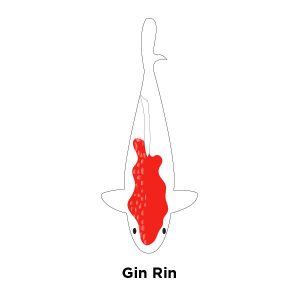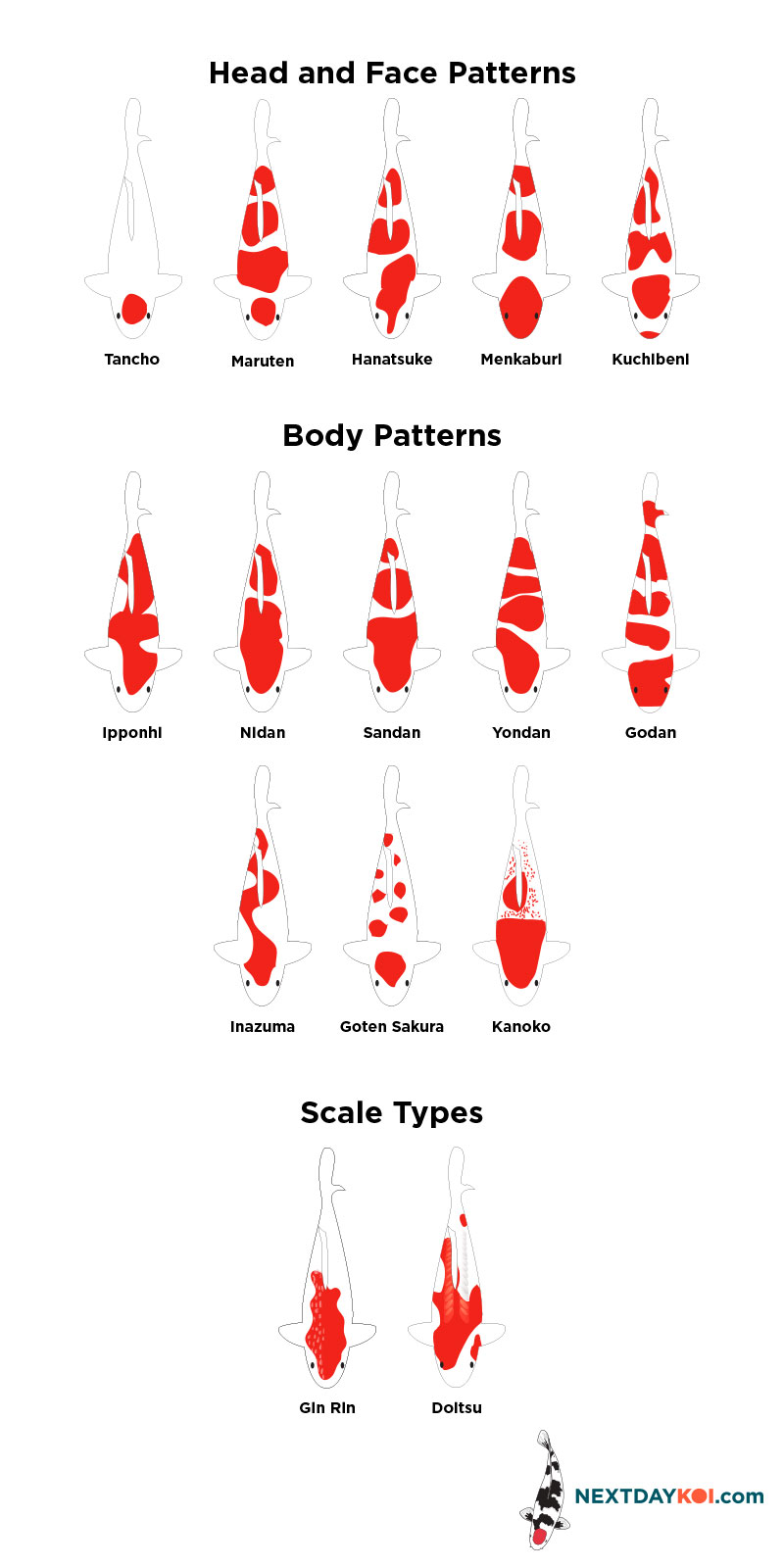
To the untrained eye, all Kohaku would appear to be the same—a white fish with hi (red) markings. But it doesn’t do justice to the many pattern varieties that have developed in one of the most popular—and awarded—varieties of koi. The Kohaku has earned recognition as one of the top three varieties known as Gosanke which also includes the Sanke and Showa.
In conjunction with the different styles of patterns, the hi (red) markings on the Kohaku can be quite varied, ranging from an a persimmon light orange shade all the way to a red shade that is almost purple in color.
Regardless of the shade of red, the white is equally important; it must be clear of blemishes, no yellowing and appear healthy. All of these factors are true testament to the diversity of this “simple” red and white fish.
Head and Face Patterns
Tancho
The Tancho is a highly prized style of kohaku because it is representative of the Japanese Red-crowned Crane (associated with luck and longevity), and it very closely resembles the rising sun symbol on the national flag.
In many ways, this is the “crown” prince of the kohaku world. As a genetic “throw” this single hi pattern on the Kohaku’s head cannot be selected for, it is a random occurrence in Kohaku throw.
It is preferred the crown be as close to a perfect circle as possible, but over the course of its development, the crown has grown to include a variety of different shapes that include a heart and a diamond.
Ideally, the Tancho mark is round, does not touch the eyes, does not bleed back into the scales behind the head, and the size is in proportion to the head and body of the koi.
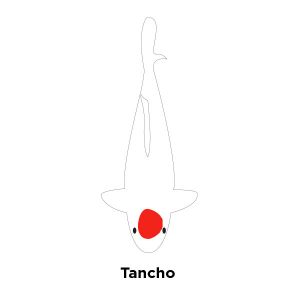
Maruten
Think Tancho with extra hi patterns on the body. It will have the characteristic Tancho crown but it will have separate body markings, too.
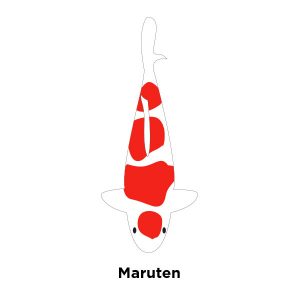
Hanatsuke
The head pattern on this variety looks like it had “bled” down the head and onto the nose. The pattern doesn’t, however, cover the entire head. It is more of a streak down the middle of the head.
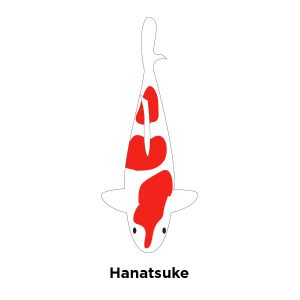
Menkaburi
This head pattern is like a red mask. The preferred hi pattern on the head should extend a little past the eyes (without touching them) and not touch the nose or lips in an unbroken hi pattern. Although perhaps not the darling of the kohaku collector universe, this hooded villain can make for a unique koi if the color is good throughout the hi.
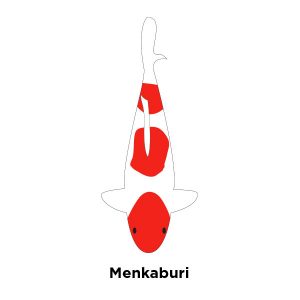
Kuchibeni
This is another extremely sought-after feature in the Kohaku patterning. In this case the lips will have red on them, giving the pattern a lipstick appearance.
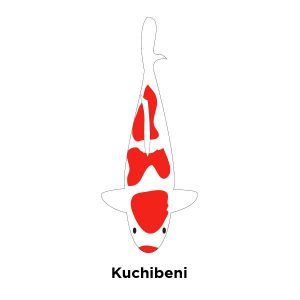
Body Patterns
The hi pattening on the body also occurs in steps, and a Kohaku is then classified by the number of “steps” (breaks in the red coloring) it has in it’s body hi:
Ipponhi
There are no steps here, just an unbroken, solid hi body pattern
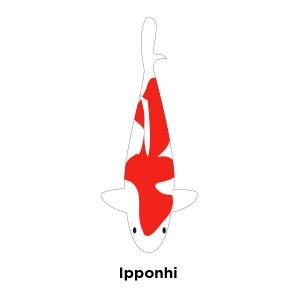
Inazuma
This is essentially an Ipponhi—or unbroken hi—where the hi resembles a lightning pattern.
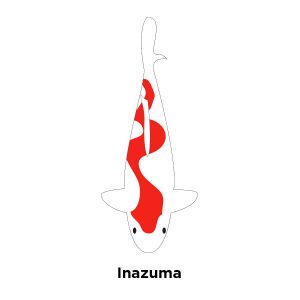
Nidan
This is characterized by a two-step body pattern

Sandan
The hi are displayed in a three-step body pattern
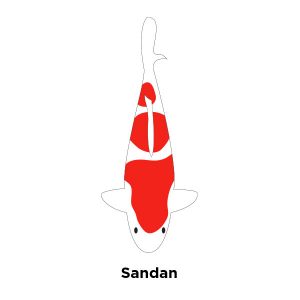
Yondan
The hi comes as a four-step body pattern

Godan
The hi comes as a five-step body pattern.

Regardless of the number of steps, the hi body pattern should be balanced and evenly distributed. Symmetry in patterning is nice, but it is not necessary.
In an ideal situation, the hi markings should not spread down past the lateral line, and should be absent from the tail or fin. Also, the “kiwa” (or “edge”) between the colors should be clean and distinct.
Kanoko
Kanoko is a generic term meaning “fawn” and in a Kohaku refers to the red dappled, almost speckled pattern with the hi on the center of the scale. The dappling effect can be a single hi pattern in the middle of white scales, but it has to have some grouping in close proximity.
Even though it appears to be an undesirable trait in a Kohaku’s deep and uniform hi, this type of Kohaku is highly prized—but only if it is a good quality pattern that lasts and doesn’t fade over time.
More often than not, this dappling is the result of a scale losing its hi—a genetic throwback to older, less-cultured koi. In koi shows, this patterning is actually judged in the Kawarimono category.
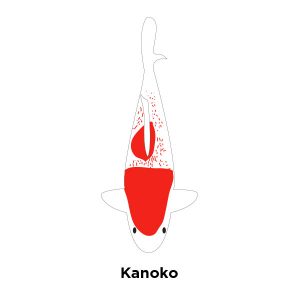
Goten Sakura
Listed as Gotenzakura by the American Koi Judges Association, the name translates to “cherry blossom.” This is another type of dappled effect that occurs in clusters or clumps (that resemble bunches of grapes or cherry blossoms). It is not a unique trait applying to Kohaku, and in the Hikari class this type of patterning is referred to as Kin Sakura.
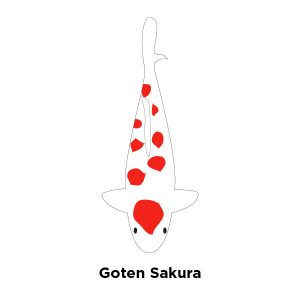
Scale Type
Within these sub-categories of Kohaku, there are also the scale and skin varietals to consider too. All of the hi patterns can also be found in Doitsu (scaleless) as well as the sparkly gin rin (reflective silver scales) varieties.
So it’s pretty evident that this simple red and white fish is more than meets the eye. It is quite the darling in the koi world and as such is held to extremely high standards when they are judged at shows.

